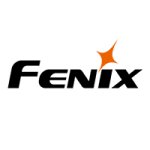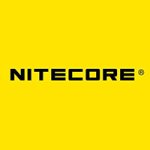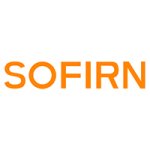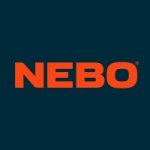
Running headlamps are essential and reliable tools for runners, serving as trusted companions during their activities. Instead of being perceived as simple add-ons or secondary items, they are recognized for their practical value and importance. They are integrated elements that enhance the overall running experience. Running headlamps provide a direct and focused source of light that illuminates the path ahead. This is particularly important for runners who engage in the activity during low-light conditions, such as early morning or evening. The headlamp's illumination helps runners see the ground, potential obstacles, and changes in terrain, significantly enhancing overall visibility. Visibility is directly linked to safety, especially when running in low-light or dark environments. A running headlamp not only helps the runner see the path but also makes them more visible to others, such as motorists, cyclists, or pedestrians. This increased visibility reduces the risk of accidents and enhances the overall safety of the runner. For trail runners or those navigating uneven terrains, a headlamp becomes an essential tool. It helps runners identify potential hazards like rocks, tree roots, or changes in elevation, allowing for better navigation and reducing the risk of tripping or falling. The hands-free nature of headlamps allows runners to focus on their activity without the need to carry a handheld flashlight. This convenience is particularly important for maintaining a natural and unrestricted running form.
Running headlamps come with various features designed to meet the specific needs of runners. The design of running headlamps prioritizes lightweight materials to minimize the additional weight on the runner's head and ensure comfort during extended use. Running headlamps typically have adjustable straps or a headband to ensure a secure and comfortable fit on the runner's head. The ability to tilt or adjust the angle of the headlamp is a useful feature for directing the light where it is needed, allowing runners to focus on the path ahead or adjust for changes in terrain. Some running headlamps include reflective elements on the headband or body of the headlamp to enhance the runner's visibility to others, especially when approached by vehicles. Comfort features, such as soft padding and breathable materials, contribute to a comfortable fit, especially during longer runs. Portability is key, and running headlamps are designed to be compact and easy to carry, either in a pocket or a running belt, when not in use. Many running headlamps are designed to be water-resistant or even waterproof, ensuring functionality in various weather conditions, including rain or sweat. Many running headlamps offer multiple lighting modes, such as high and low brightness levels, strobe modes for increased visibility, and sometimes red light modes to preserve night vision. Some running headlamps may include safety features such as a blinking or strobe mode to enhance visibility and alert others to the runner's presence. Intuitive and easy-to-use controls allow runners to adjust brightness levels, switch between lighting modes, and operate the headlamp without interrupting their run. These features collectively contribute to making running headlamps effective and versatile tools for runners who engage in activities in low-light conditions.
Running headlamps are often equipped with the capability to produce both flood and spot beams of light. A flood beam is characterized by a wide and evenly distributed illumination. It provides a broader field of view, lighting up a larger area in front of the runner. Flood beams are beneficial for illuminating the immediate surroundings, enhancing peripheral vision, and providing general visibility. In contrast, a spot beam is more focused and concentrated. It produces a narrow and intense beam of light that extends over a longer distance. Spot beams are useful for highlighting specific objects or areas in the distance, allowing runners to see farther ahead with greater detail. Running headlamps that feature both flood and spot beams offer users the flexibility to adjust the lighting pattern based on their specific needs and preferences. This combination allows runners to customize the illumination according to the terrain, visibility conditions, and the nature of their run. When running on varied terrain, such as trails or uneven paths, the ability to switch between flood and spot beams becomes valuable. Flood beams can help illuminate the immediate trail and surroundings, while spot beams can be used to see farther down the path or focus on specific obstacles. The combination of flood and spot beams contributes to enhanced safety and visibility during nighttime or low-light running. Flood beams help illuminate the immediate surroundings, while spot beams provide long-range visibility, reducing the risk of tripping or encountering obstacles on the running path.
The combination of LED lighting and rechargeable battery technology in headlamps creates an efficient and sustainable lighting solution. LEDs are highly energy-efficient, converting a significant portion of electrical energy into visible light. This efficiency is particularly valuable in headlamps as it allows them to produce bright illumination with minimal power consumption. Due to the energy-efficient nature of LEDs, headlamps equipped with LED technology can operate for longer durations on a single charge of rechargeable batteries. This extended battery life is a key advantage for users who rely on headlamps for outdoor activities, work, or emergencies. The small form factor of both LEDs and rechargeable batteries enables seamless integration into the design of compact, lightweight running headlamps. This integration enhances the wearability and aesthetics of the headlamp. Modern rechargeable batteries often feature quick-charging capabilities. This reduces the time required to charge the batteries, making it convenient for users to quickly replenish the power source. Faster charging contributes to the overall efficiency of the headlamp and supports the user's need for a quick turnaround. LED technology enables the integration of smart features in rechargeable running headlamps. This may include Bluetooth connectivity, app control, or programmable settings, providing runners with additional customization and control over the headlamp's functionality. Some LED headlamps incorporate motion sensor technology to adjust the light output based on the runner's movement, optimizing battery efficiency and providing the right amount of light as needed.















